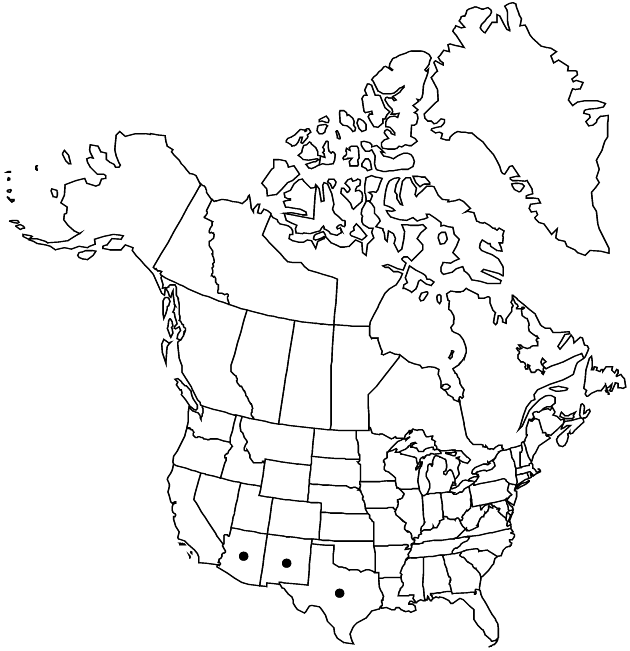Difference between revisions of "Brickellia parvula"
Smithsonian Contr. Knowl. 3(5): 84. 1852.
FNA>Volume Importer |
FNA>Volume Importer |
||
| Line 46: | Line 46: | ||
|publication year=1852 | |publication year=1852 | ||
|special status= | |special status= | ||
| − | |source xml=https://jpend@bitbucket.org/aafc-mbb/fna-data-curation.git/src/ | + | |source xml=https://jpend@bitbucket.org/aafc-mbb/fna-data-curation.git/src/f6b125a955440c0872999024f038d74684f65921/coarse_grained_fna_xml/V19-20-21/V21_1285.xml |
|tribe=Asteraceae tribe Eupatorieae | |tribe=Asteraceae tribe Eupatorieae | ||
|genus=Brickellia | |genus=Brickellia | ||
Revision as of 18:46, 24 September 2019
Perennials, 12–30 cm (caudices woody). Stems branched, pubescent. Leaves opposite; petioles 0–1 mm; blades 3-nerved from bases, deltate-ovate to lanceolate, 7–30 × 4–28 mm, bases mostly obtuse to subtruncate, sometimes acuminate, margins serrate, apices acute, faces puberulent, gland-dotted. Heads borne singly or in corymbiform-paniculiform arrays. Peduncles 10–30 mm, puberulent. Involucres cylindric to campanulate, 8–12 mm. Phyllaries 12–15 in 3–5 series, greenish, often purple-tinged, 5–7-striate, unequal, margins scarious (apices acute); outer ovate to lance-ovate (puberulent, margins ciliate), inner narrowly lanceolate (glabrous). Florets 8–14; corollas pale green or yellow, 5.5–6.5 mm. Cypselae 4.5–5 mm, densely pubescent; pappi of 24–30 white, usually barbellate, sometimes subplumose, bristles. 2n = 18.
Phenology: Flowering Aug–Oct.
Habitat: Limestone or granitic cliffs
Elevation: 1500–2500 m
Distribution

Ariz., N.Mex., Tex.
Discussion
Selected References
None.